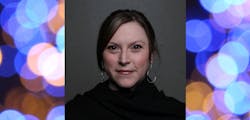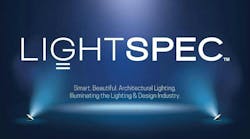I’m going to take a shot at something different in my last blog of 2019. I was listening to a podcast that covered predictions for 2020, and it reminded me of a remark made by a Strategies in Light advisory board member just within the past week. Clifton Stanley Lemon (known to many of you) and I were working on an upcoming Q&A for your edification, and he observed that pundits will often make bold claims that are widely accepted even if they don’t come true, but the “wisdom of the crowd” will enable the solid-state lighting (SSL) industry to make better decisions based on probabilities instead of dramatic statements on trends.
In the spirit of the greater wisdom of our industry, I want to highlight a few things that have been said or written in 2019 in LEDs Magazine content that resonated as being highly intuitive, predictive, and/or instructive, perhaps even flavored with a hint of constructive criticism. These appear in no particular order, but I found them thought-provoking and I hope you do, too.
Controls need to be less intimidating
During the Lighting Enabled Systems & Applications (LESA) Center IADays in the spring, I quoted presenter Mike Myer of the Pacific Northwest National Laboratory, who said, “We often get asked for an ‘Alexa’ for the building market,” which indicated, he observed, how important user-friendliness and reduction in complexity are in connecting controls for smart building systems. This thought was also echoed by Wavelength Lighting’s Michael Hennessy in a Last Word column, when he explained his company’s approach to controls was “that we prioritize usability over wide-ranging functionality, and we look for technologies that are easily replaced and upgraded, as they will inevitably need to be.”
The spotlight is on light quality
We found the focus on light quality to be evident in many discussions as well as product demonstrations. Consider chief editor Maury Wright’s recap of the lively debate that ensued during Strategies in Light’s gameshow-style panel session earlier this year. The general outcome of one topic during that panel was that efficacy is no longer driving innovation, but photometric performance and color quality will push SSL makers to deliver products that imbue a space with both appropriate light levels for the intended use and a certain aesthetic and mood for an enhanced experience. This was also in evidence during LightFair, with top-quality components and end products moving away from commodity LEDs and incorporating thoughtfully-engineered optics and tunable features. And industry organizations such as the DesignLights Consortium (DLC) are looking to recognize the importance of light quality in vetting future products that will be admitted to its qualified products list (QPL).
Science is the way forward
“Our manufacturers and our intellectual property (IP) developers need to lead from the front in supporting the research and development (R&D) process of new human-health-oriented LED lighting products that have therapeutic benefits,” stated optometrist and researcher Dr. Stephen Mason in another Last Word column this year. Indeed, there exist many opportunities for commercial entities to interact with and support R&D organizations in the SSL sector. More collaboration — and let’s be honest, more financial support for scientific studies — will benefit all sides and allow innovation to continue its pace with the demand for better lighting that improves the human experience. Regardless of Mason’s focus being lighting’s impact on eye health, whether it is used in indoor agriculture to support the global food supply, or in a healthcare setting to increase patient comfort and safety, or in an industrial workplace where workers need help maintaining proper circadian rhythms, better light will mean better business into the future.
Incapacity of innovation is death
Both Maury and Lumileds’ Steve Barlow brought the tender topic of a struggling industry to light in recent writings. I don’t want to pile on. But I do want to explain in perhaps a slightly softened stance. The year 2019 showed some hardship in financial circumstances and a lot of tumult in business due to mergers and acquisitions, intellectual property disputes, and the ever-shifting US tariffs. However, LEDs haven’t fully penetrated the lighting market yet and there is still opportunity, wrote Maury. Price erosion slowed a bit, but as Barlow said, “[S]uccess lies in shifting [manufacturers’] strategy away from the race-to-the-bottom price model and instead focusing on meaningful innovation.” How do we determine what innovation is meaningful? “See all the other insights for the answer” is my response.
I’m looking forward to 2020; here’s to a healthy LED and lighting market, a real growth industry.






